Your inbox is full of generic cold emails, yet the introductions you need never arrive. You waste hours hunting for the right contact, only to realize you’re still circling the same stale networks.
Modern business networking tools solve that problem. They surface real connections, map warm introductions, and help you follow up while the conversation is still fresh. Below, you’ll find the platforms that do just that.
Let's explore them one by one.
1. Village
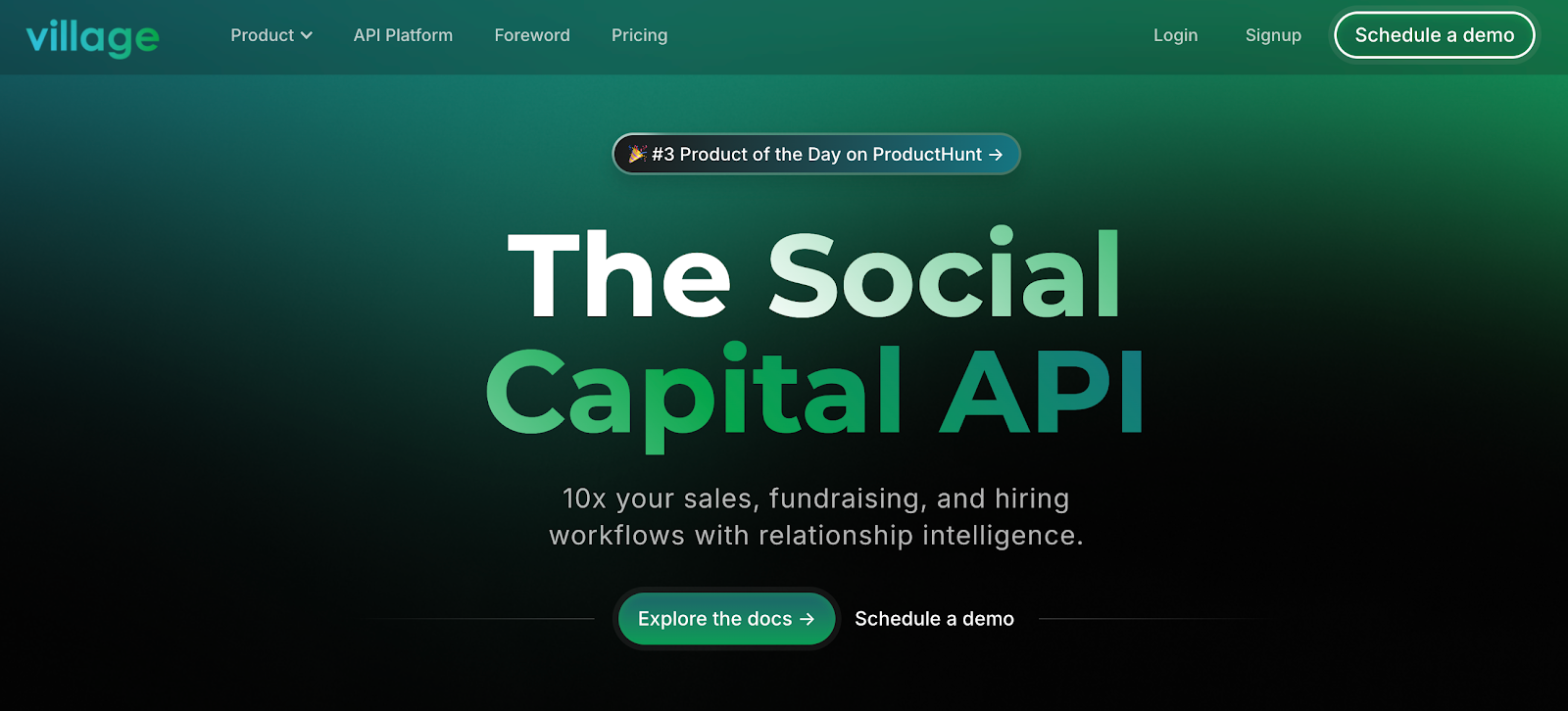
Village helps you skip cold outreach and connect through people you trust. It maps your relationships and shows who can introduce you to the investor, client, or partner you’re trying to reach. It’s for professionals who want better outcomes from their networking efforts.
Village syncs your contacts, calendar, and LinkedIn to reveal first, second, and third-degree connections. Instead of sending cold messages, you can request warm intros through mutual contacts.
The platform highlights verified past interactions, shared deals, and work history so you know exactly who can help you connect.
Core Features
- Map your network using synced contacts, LinkedIn, and calendar data
- View intro paths to potential clients, investors, or hires
- Use Paths Explorer to visualize your intro options
- Manage requests with Kanban boards and customer relationship management (CRM) sync
- Embed Village into other software to offer relationship intelligence to users
Pricing
- Free trial
- Essentials ($19/month): Unlock unlimited AI search, investor network access, and up to 3 warm intro paths per contact.
- Pro ($39/month): Add team collaboration, unlimited screened results, and up to 6 warm intros per contact.
- Premium ($119/month): Enable full team search, unlimited intros, and optional API access.
- API platform ($499/month): Embed Village directly into your CRM, directory, or job board to power warm intros at scale.
Try Village for free and start using your network more intentionally.
2. Hunter
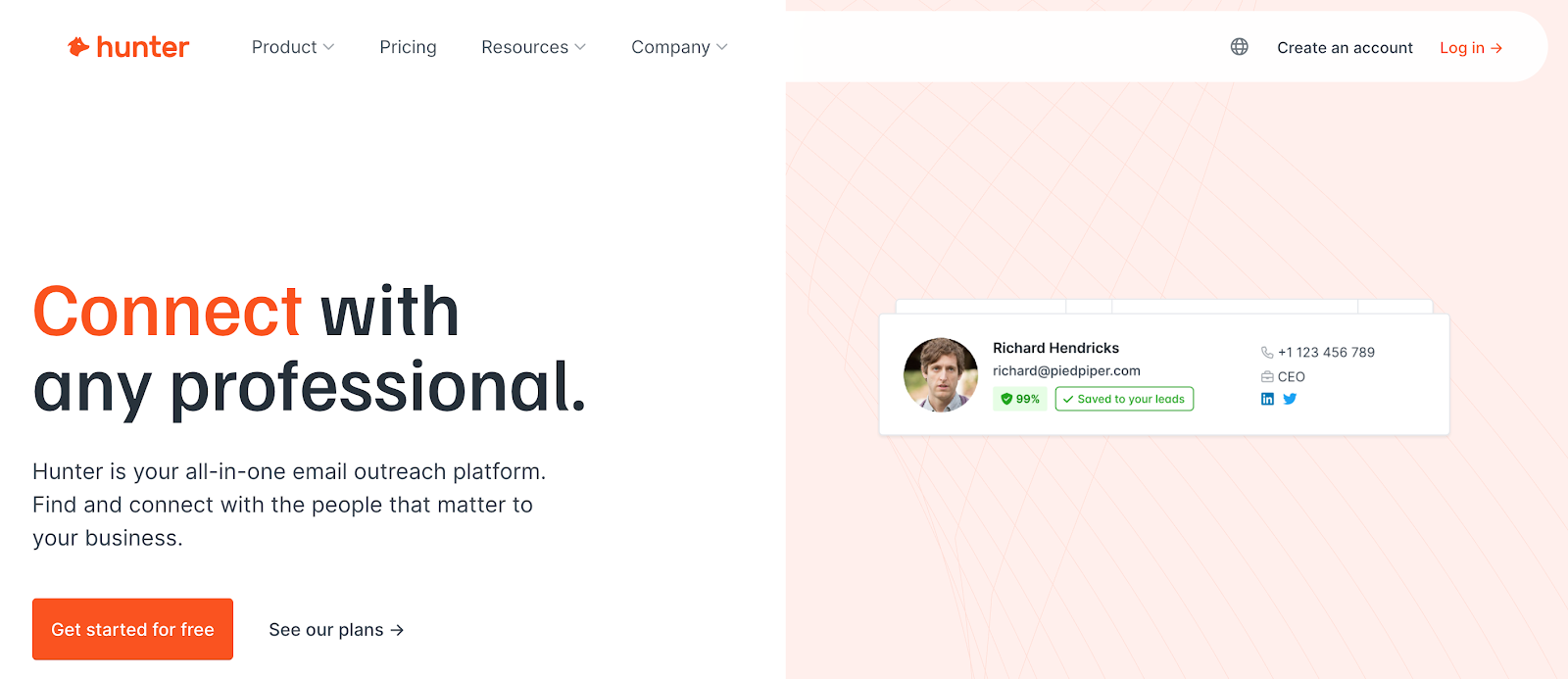
Hunter finds the email addresses you need to start new professional relationships. Type a name or a company domain, and Hunter returns verified contact details. This helps you reach potential clients faster. It slots neatly into your stack of business networking tools because it shortens the gap between research and outreach.
Hunter crawls nearly 100 million websites and cross-checks each result through strict verification steps. You see source links, confidence scores, and job titles, which let you build trust from the first message.
Core Features
- Email finder: Locates a verified address for any professional in seconds.
- Domain search: Reveals every public email tied to a website and labels each role.
- Email verifier: Checks format, server response, and database records to keep bounce rates low.
- Bulk tools: Clean thousands of contacts in one upload, perfect for large networking events.
Pros
Hunter is easy to use. You can find contact details in seconds, fine-tune your list, and avoid the dead-end leads that waste your time.
Cons
If you're reaching out to early-stage startups or local business owners with little web presence, results can be limited. Some addresses may be outdated, especially if you’re contacting businesses that rarely update public information.
Pricing
- Free
- Starter: $49 per month
- Growth: $149 per month
- Scale: $299 per month
3. Grip
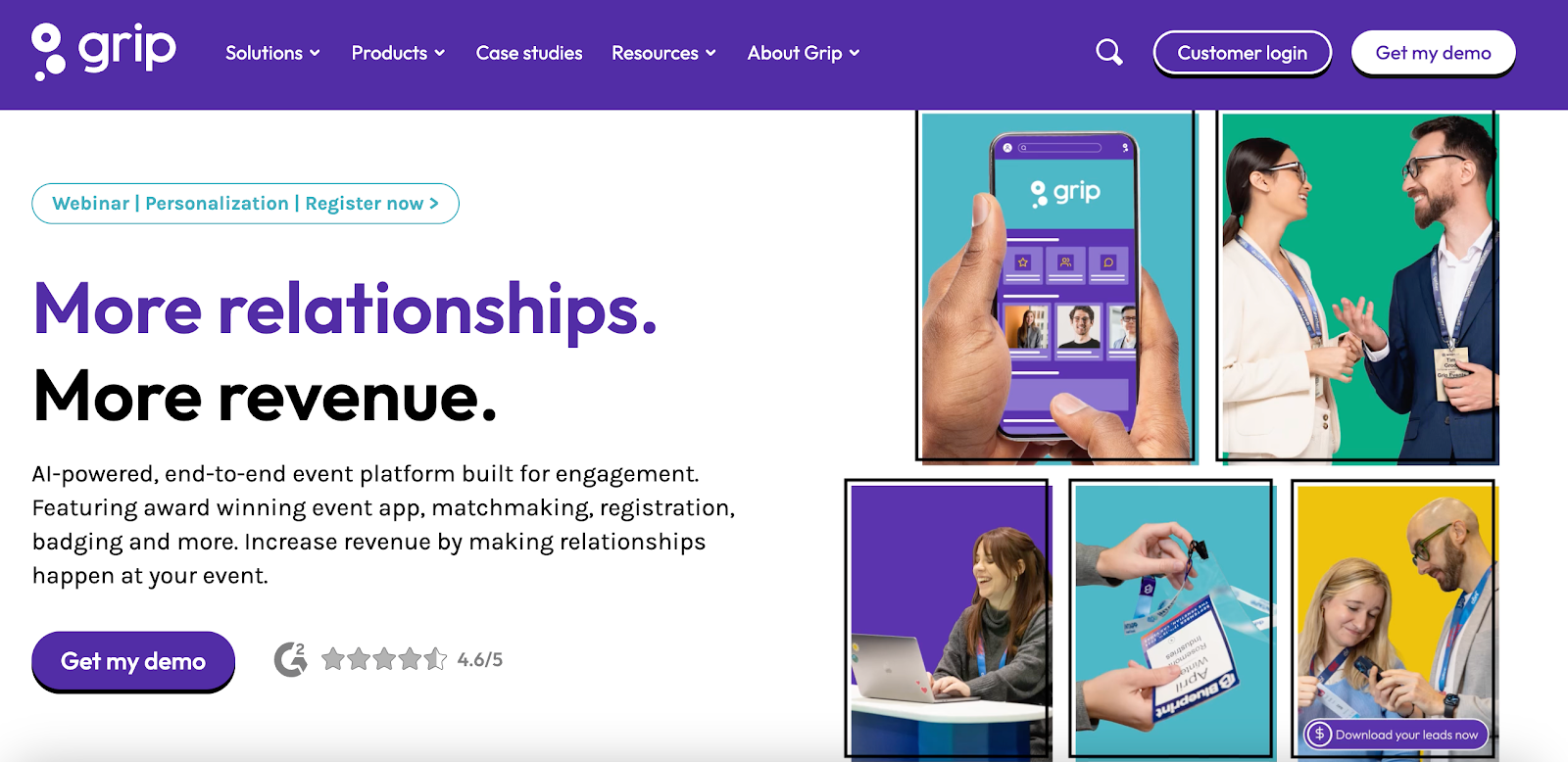
Grip turns busy conferences into focused professional networking opportunities. The AI engine studies profiles in real time, then matches you with like-minded professionals who share your goals and interests.
Instead of hoping for luck, you walk in with a personalized introduction list that leads to new connections and business opportunities.
Grip creates a clear meeting schedule, offers lead retrieval for exhibitors, and keeps conversation threads open after the event so you stay connected with other attendees. The result is a networking platform that turns one-off chats into steady growth opportunities for your company.
Core Features
- AI matchmaking that pairs you with people who match your objectives
- Mobile event app for live chat, session guides, and on-site alerts
- Badge scanning and lead retrieval for quick follow-up after the show
- Grip Hub for year-round community engagement and feedback tools
- Integration directory that connects your CRM or marketing software to event data
Pros
Grip helps most people make the conference floor feel smaller and more strategic. Organizers value the analytics that highlight growth opportunities for future editions.
Cons
Deep analytics sometimes require extra setup, and feature fit may vary depending on the scale of your event.
Pricing
- Pricing is only available through custom quotes.
4. Blinq
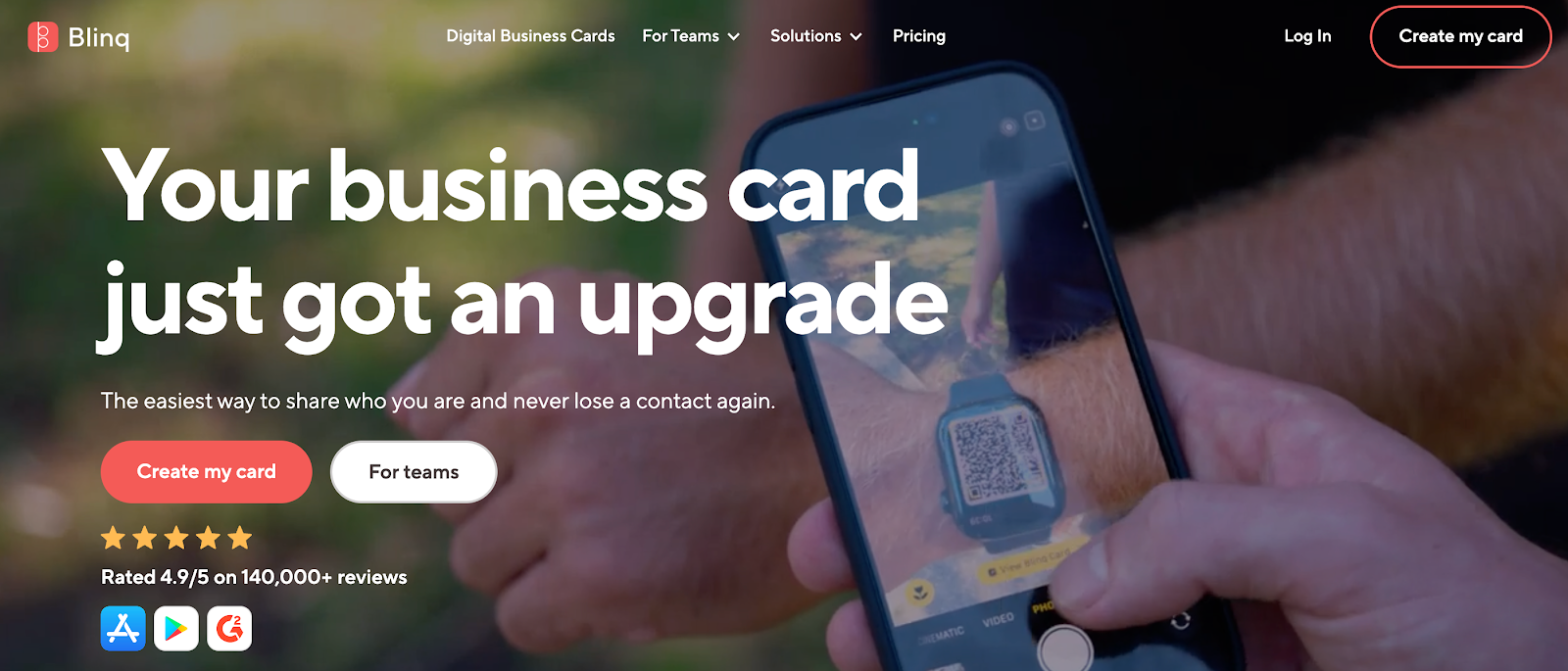
Blinq puts your digital business card on a single QR code. One scan gives new connections your phone, email, and socials, so you move straight into conversation. That quick handoff helps you build relationships with like-minded people before the moment slips away.
Sharing feels natural, whether you swap cards in person or drop a link inside Facebook groups and other social platforms. You can create multiple profiles for different interests, add brand colors, and jot private notes so you remember why you clicked with other professionals.
Core Features
- QR code cards that share contact info, portfolio links, and services
- Profile switching for freelance, team, or side project identities
- Link sharing by email, text, or any app where you make new connections
- Automatic contact capture with space for notes about where you met and what you discussed
- Custom branding that fits the company's style and digital marketing goals
- Dashboard to edit cards, export contacts, and expand your network over time
Pros
Blinq frees you from reordering paper cards and lets most people share insights in a digital business card. It feels fresh, practical, and ranks among the most effective tools for first impressions when you attend events packed with other professionals.
Cons
Brand customization caps out sooner than heavy power users may like, and analytics feel basic. Offline scans can lag in weak signal areas, and deeper CRM integrations sit behind paid plans, which may limit value for larger digital marketing teams.
Pricing
- Free
- Premium (for individuals): $7.99 per month
- Business (for teams): $6.99 per card per month (there’s a minimum of five cards)
- Enterprise: Custom quote
5. BuzzSumo
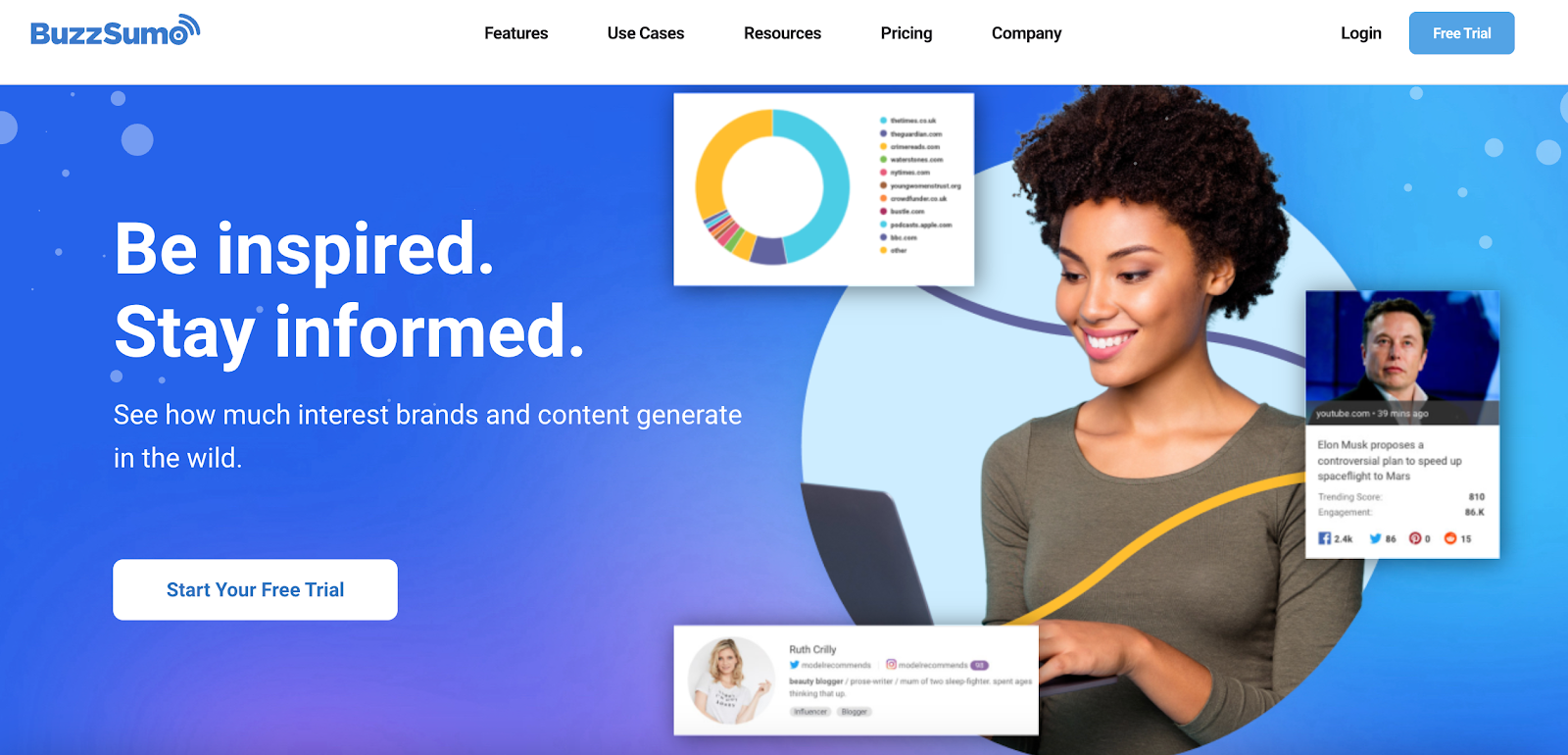
BuzzSumo shows what content your industry peers share and why it spreads. By tracking industry trends and engagement data, you discover topics that spark conversation and the creators who shape them. That insight turns this research engine into a smart addition to your business networking tools.
You can use those findings during networking events or inside Slack communities to spark meaningful connections. When you know which articles resonate, you join discussions and create posts that bring new opportunities to your network.
Core Features
- Content discovery: Highlights the most shared and discussed articles across your industry.
- Influencer search: Ranks creators by reach and engagement, helping you connect with professionals who already speak to your future clients.
- Journalist and author reports: Surface writers and creators behind trending content, making outreach more targeted.
Pros
BuzzSumo gives you the context you need to build real professional connections. You find people already leading conversations in your space and use that insight to start meaningful relationships.
Cons
Some features, like the Topic Explorer, can feel cluttered and less useful for focused networking efforts. The price point may be high if you only need occasional searches or influencer research.
Pricing
- Content creation: $ 199 per month
- PR and comms: $299 per month
- Suite: $499 per month
- Enterprise: $999 per month
Tips to Make the Most of These Business Networking Tools
Now that you’ve seen the most effective tools for networking, you still need to know how to use them well. This is where professional growth starts. Use each interaction as an opportunity, not just a quick exchange.
These tips will help you get more out of such platforms and connect with like-minded individuals who are serious about building relationships.
Follow Up After Networking Events
You put in the time, shook hands, and traded intros. What happens next?
Follow up while the conversation is still fresh. Mention something you talked about, reference a shared interest, or send a useful link related to your last exchange. Keep it brief and clear. People are more likely to respond when the message feels like it’s coming from someone who listened.
Make a habit of setting reminders to check in a week or two later. This helps you stay connected and keeps conversations from going cold.
Use Digital Business Cards
Business networking tools can replace business cards with one scan. But if all you do is share contact details, you’re missing the point.
Use that digital card to start a meaningful conversation. Add your services, your latest project, or a social link that shows who you are. Customize it so your identity stands out. The goal isn’t to hand out information. The goal is to invite follow-up.
When you get someone else’s card, take five seconds to add a note. One quick sentence now makes it easier to reconnect later.
Use Feedback Tools to Improve Your Approach
If you run events, lead groups, or host community calls, feedback tools can reveal what worked and what fell flat. Pay attention to patterns in responses. That insight helps you fine-tune your communication style and make better use of future networking events.
Even informal feedback helps. Ask a trusted contact how you came across in a pitch or intro. Most people skip this step. Those who don’t improve faster.
Create Growth Opportunities
The fastest way to open new doors is to help someone else open theirs. Introduce two contacts who should know each other. Forward an opportunity that doesn’t serve you but might serve them.
Business networking works best when it's reciprocal. Offer help before you ask for anything. Most people remember those who create value without conditions.
Build Warmer Connections That Lead Somewhere
Most networking tools help you reach people. Village helps you reach the right ones by showing who in your network can make a personal introduction.
With Village, you can expand your reach without starting from scratch. It maps your first, second, and third-degree connections and highlights the best paths to the people you want to meet. You send the ask with context, and your contact handles the intro.
Village gives you access to:
- A searchable network of over 700 million profiles
- Warm intro requests with built-in messaging templates
- A simple dashboard to manage outreach
If you want reliable connections that open business opportunities, Village helps you get there faster. Sign up for free and see how far your network can take you. If you want to learn more about the platform, schedule a free demo now.
FAQs About Business Networking Tools
What are the four types of business networks?
The four main types of business networks are operational, strategic, personal, and industry networks.
- Operational networks help you complete daily tasks through internal connections.
- Strategic networks support long-term goals like partnerships and expansion.
- Personal networks include friends, mentors, and trusted peers.
- Industry networks connect you with professionals across your field for shared knowledge and opportunities.
What is the best tool for networking?
The best tool depends on your goals, but if you want to build trusted relationships and avoid cold outreach, Village stands out. It helps you connect through warm introductions, which are more effective and more likely to lead to real conversations.
While other tools focus on contact discovery or event-based networking, Village is built around the strength of your existing relationships.
Which platform is commonly used for business networking?
Many professionals use LinkedIn to stay visible and meet new contacts. However, LinkedIn often relies on cold outreach and surface-level interactions. Village takes a different approach by helping you tap into your network for warm introductions. That method leads to more meaningful connections.
How can I improve my business networking skills?
Start by being intentional. Reach out with context, follow up quickly, and make it easy for others to engage with you. Listening well and helping others without expecting anything in return goes a long way. Keep track of your connections and stay active in the communities that are relevant to your work.










